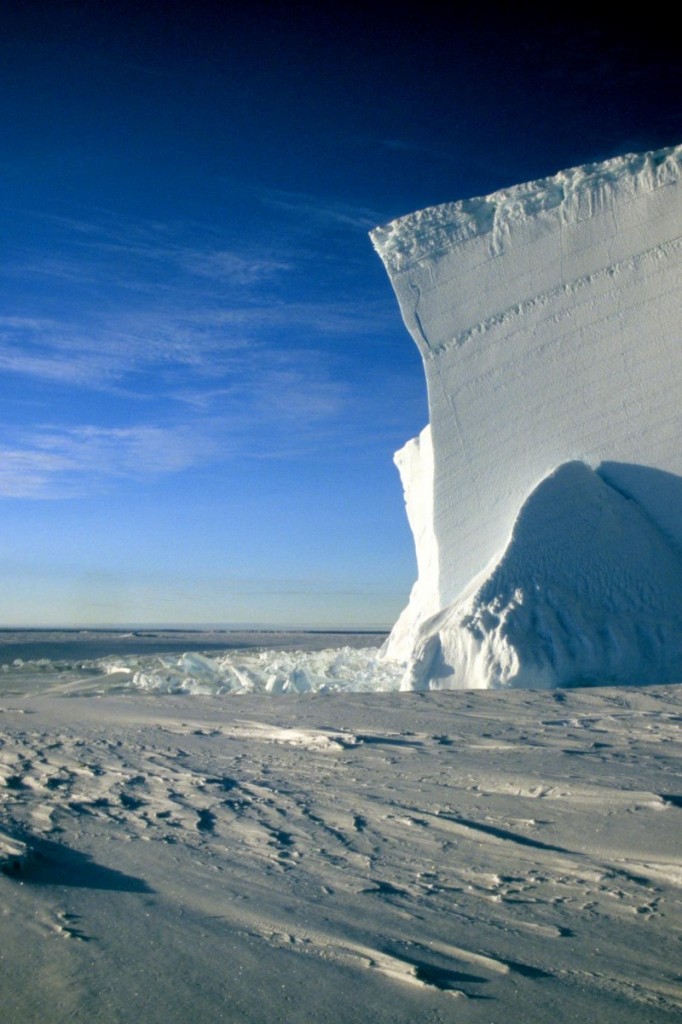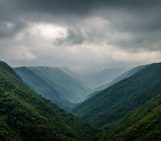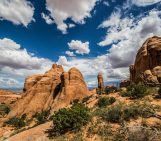Standing on the vast expanse of gleaming white sea ice of the Atka Bay, Michael Bock took this stunning picture of an Antarctic iceberg. The days, during the Antarctic summer, are never ending. Despite capturing the image at midnight, Michael was treated to hazy sunlight.
“Clearly visible [in the iceberg] are the annual snow accumulation layers which illustrate how the ice archive works.; as you look down the icy face, the ice gets older,” explains Michael. As more snow accumulates on the surface of the glacier, the underlying layers of snow are compressed by the weight from above, hence layers become thinner with increasing depth. On the ice shelf or on the Antarctic plateau these accumulation layers can only be seen when digging a snow pit. The obvious limitation of this is that only a few meters can be excavated with spades, limiting the observations one can carry out. Instead, to gain information about what happens deep within the ice pack, drill cores are usually used. Long cores of the layers of ice can be extracted , providing useful data. “One can drill into the ice (typically on the Antarctic plateau on ice divides or domes) reaching down to bedrock, with the retrieved ice core revealing long records of climatic history,” adds Michael. Deep ice cores can be more than 3000 m long. Depending on e.g. annual mean temperature and accumulation rate the age and resolution of these archives can vary greatly. Whilst this iceberg cannot be studied directly due to hazards associated with working underneath it does “serve as a beautiful visualisation of what we are searching for in ice core science”, explains Michael.
By Laura Roberts Artal and Michael Bock.
If you pre-register for the 2015 General Assembly (Vienna, 12 – 17 April), you can take part in our annual photo competition! From 1 February up until 1 March, every participant pre-registered for the General Assembly can submit up three original photos and one moving image related to the Earth, planetary, and space sciences in competition for free registration to next year’s General Assembly! These can include fantastic field photos, a stunning shot of your favourite thin section, what you’ve captured out on holiday or under the electron microscope – if it’s geoscientific, it fits the bill. Find out more about how to take part at http://imaggeo.egu.eu/photo-contest/information/.




